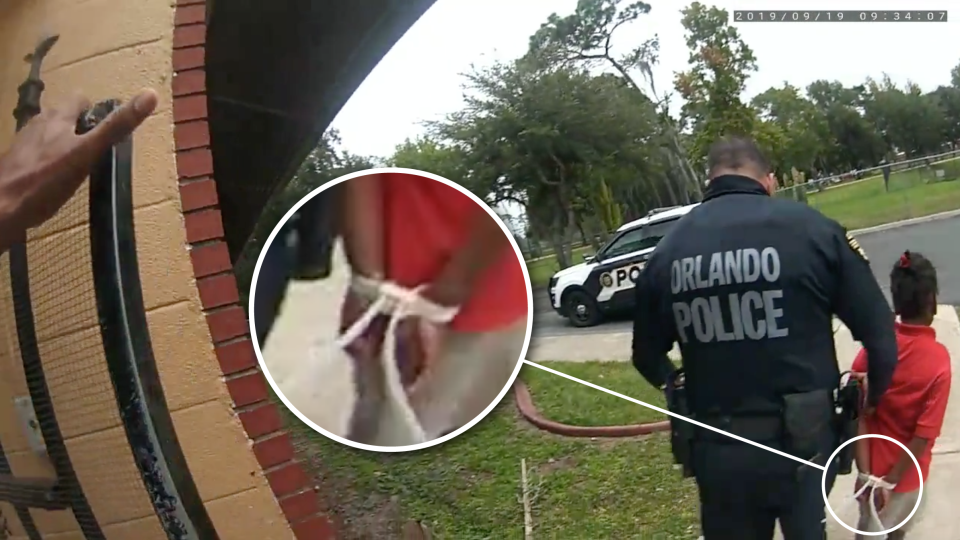By the numbers: Who are the young children being arrested at schools?
USA TODAY examined data from the FBI’s National Incident-Based Reporting System to develop a profile of the very youngest kids arrested in schools.
The number of cases found by the news organization almost certainly understates the total of all arrests involving very youngest children at school, criminologists said, because it does not include reports from police departments in key states such as California, Florida and New Jersey.
“There are a lot of big agencies that don't participate in NIBRS,” said Brendan Lantz, a criminology professor at Florida State University. But that’s the “best bet, even despite the limitations.”
Past efforts to count up national school arrests often have swept together students from kindergarten-age to high school.
The FBI database provides details on the ages and other demographic characteristics of arrested children and their alleged victims.
One key finding: Nearly two-thirds of arrests were for assault.
The FBI includes in its definition of assault cases in which no one was injured. At schools, a fight, a verbal threat, or a tantrum where a child flails or throws things could all lead to an assault charge.
Most victims of the children accused of assault were uninjured, according to the FBI's database.
Children this age are likely to be much smaller than the adults they are accused of assaulting. Data from the U.S. Centers for Disease Control and Prevention show the average 5-year-old weighs 46.6 pounds and is 44.4 inches tall. For 9-year-olds, the average is 78 pounds, 53.5 inches tall.
First-grader Kaia Rolle was charged with battery in 2019, accused of kicking and hitting adult staffers at a school in Orlando, Florida. The 6-year-old was placed in zip ties.
Handcuffs were not used only because they were too big for her wrists.
"She should have never been arrested in the first place," said Darryl Smith, Kaia's lawyer.

To get a further glimpse into why children ages 5 to 9 were arrested, USA TODAY filed public records requests to obtain dozens of police reports written over the past two decades, including from departments that don't send data to the FBI.
The language that police use to describe these incidents is often the same that officers would use when writing up adults. Even in cases where a child is simply referred to the court system in lieu of arrest, the process can involve criminal investigative procedures such as fingerprinting.
School and police officials in the Tennessee case did not respond to requests for comment.
With the Florida arrest of the third-grader accused of punching a classmate, Art Forgey, a spokesperson for the Alachua County Sheriff’s Office, said the officer was responding to someone from the school.
“A person of authority from the school notified him that this battery had occurred,” Forgey said. “And so at that point in time, he has a duty to intervene.”
Florida law requires at least one law enforcement officer be stationed at every public school. Jackie Johnson, spokesperson for Alachua County Public Schools, said she could not comment on the specific case.
She said the district contracts with local police agencies and generally “we do not involve law enforcement” in misdemeanor cases. But, she added, “it depends on the situation.”
'Incorrect data'
The FBI is not the only source for data on children arrested in schools.
Data from the U.S. Department of Education’s Office for Civil Rights make it possible to isolate arrests at schools serving elementary grades. But the numbers have major problems, USA TODAY found.
The department's 2017-2018 report listed more than 2,800 elementary school arrests.
Just five school districts accounted for more than 70 percent of the total, and all told USA TODAY that the federal education department's numbers were wrong. Four said their actual number of arrests was zero.
A Department of Education spokesperson said although the Office of Civil Rights performs data quality checks, accuracy depends on the school districts that contribute data.
The education department data says that Del Valle Independent School District in Texas arrested more than 900 elementary school kids in 2017-18.
"That number should be zero," said Christopher Weddle, executive director of communications for the district, in an email.
Weddle said the district "submitted incorrect data through an online portal" and is submitting a request to fix the error.
HOW WE DID IT. USA TODAY downloaded the arrestee and offense files from the FBI’s National Incident-Based Reporting System from 2000 through 2019. Arrestees and their offenses were matched on the incident identifier and offense type listed in both files. Reporters selected only records for: arrestees age 5 to 9; location types that included the word “school”; incident times from 7 a.m. to 4:59 p.m.; arrest types listed as “on-view” or “taken into custody.” The methodology also included steps to eliminate duplicate arrestee records. FBI data for 2020 was excluded because of the widespread school closures that came with the pandemic.The calculation of the population of Black children age 5 to 9 used the data from U.S. Census Bureau 2019 Population Estimates.
This article originally appeared on USA TODAY: Kids, police and schools: Which young students are being arrested?
